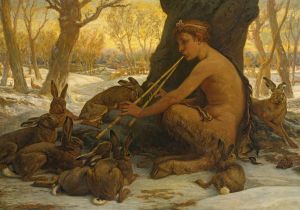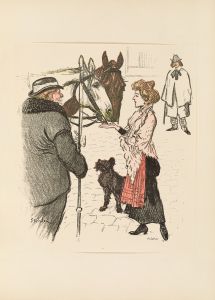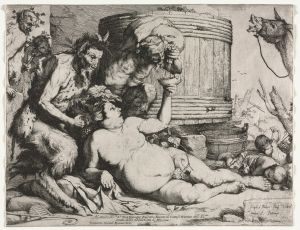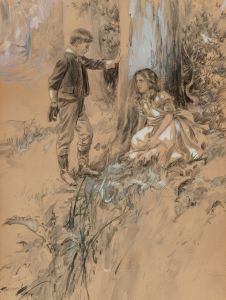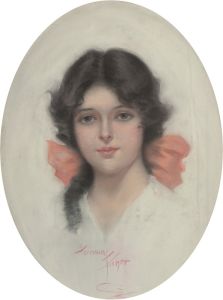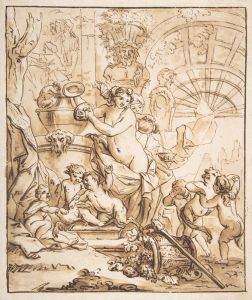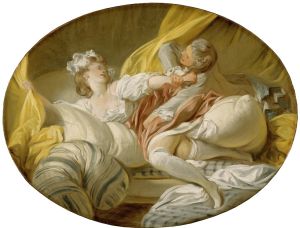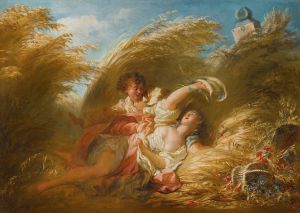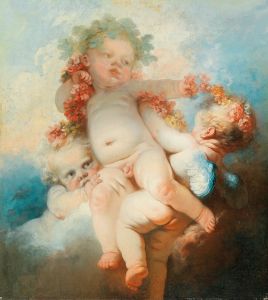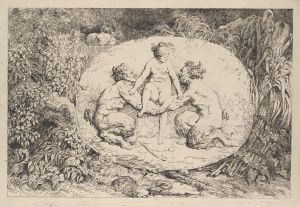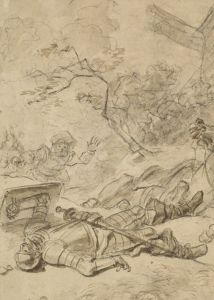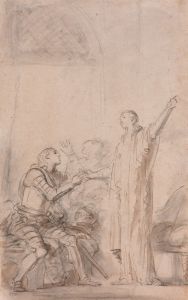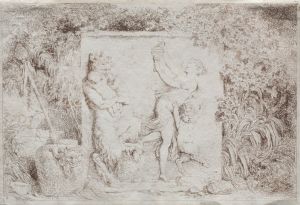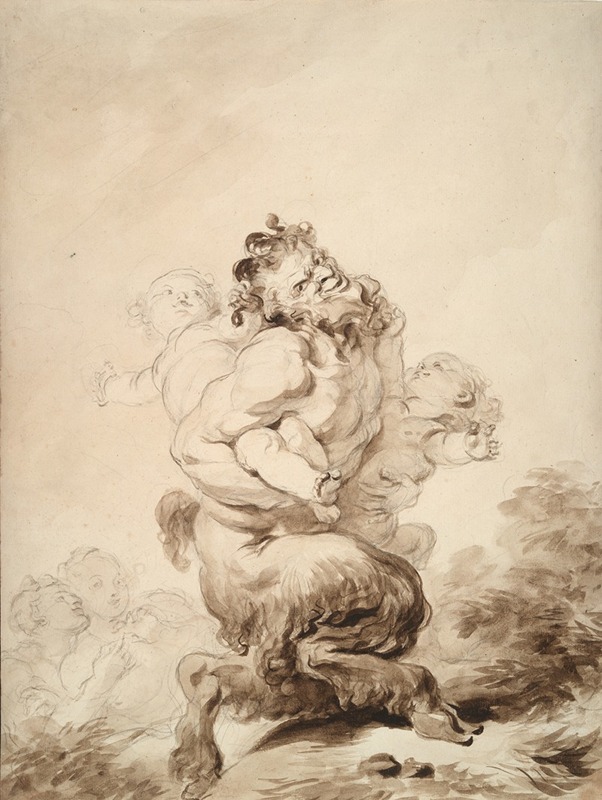
A Satyr Teased by Two Putti
A hand-painted replica of Jean-Honoré Fragonard’s masterpiece A Satyr Teased by Two Putti, meticulously crafted by professional artists to capture the true essence of the original. Each piece is created with museum-quality canvas and rare mineral pigments, carefully painted by experienced artists with delicate brushstrokes and rich, layered colors to perfectly recreate the texture of the original artwork. Unlike machine-printed reproductions, this hand-painted version brings the painting to life, infused with the artist’s emotions and skill in every stroke. Whether for personal collection or home decoration, it instantly elevates the artistic atmosphere of any space.
Jean-Honoré Fragonard's painting "A Satyr Teased by Two Putti" is a notable work that exemplifies the Rococo style, characterized by its playful themes, light-heartedness, and intricate details. Fragonard, a prominent French painter of the 18th century, was known for his exuberant and hedonistic depictions, often focusing on themes of love, playfulness, and the pleasures of life. This painting is a testament to his skill in capturing the whimsical and the mischievous.
The painting depicts a mythological scene featuring a satyr, a creature from Greek mythology that is part man and part goat, known for its lascivious nature and association with Dionysian revelry. In this artwork, the satyr is being teased by two putti, which are cherubic figures often used in art to symbolize love or the playful aspects of life. The interaction between the satyr and the putti is rendered with a sense of movement and vitality, capturing a moment of light-hearted mischief.
Fragonard's use of color and brushwork in "A Satyr Teased by Two Putti" is typical of the Rococo style. The palette is soft and pastel, with an emphasis on creating a sense of warmth and intimacy. The brushstrokes are fluid and dynamic, contributing to the lively atmosphere of the scene. The composition is carefully balanced, with the figures arranged in a way that guides the viewer's eye through the painting, creating a sense of harmony and balance.
The painting reflects the cultural and artistic trends of the time, particularly the Rococo movement, which emerged in early 18th-century France. This movement was characterized by its ornate and decorative qualities, as well as its focus on themes of romance, nature, and playfulness. Fragonard was one of the leading figures of this movement, and his works often embodied its ideals, celebrating the pleasures of life and the beauty of the natural world.
"A Satyr Teased by Two Putti" is also indicative of Fragonard's interest in mythology and allegory, common subjects in Rococo art. By incorporating mythological figures like the satyr and putti, Fragonard was able to explore themes of desire, temptation, and the interplay between innocence and experience. These themes were popular among the patrons of the time, who were often members of the aristocracy seeking art that reflected their own leisurely and indulgent lifestyles.
The painting is part of a larger body of work by Fragonard that includes other mythological and allegorical scenes, as well as portraits and landscapes. His ability to capture the essence of the Rococo style has made his work enduringly popular, and "A Satyr Teased by Two Putti" remains an important example of his artistic legacy.
In summary, Jean-Honoré Fragonard's "A Satyr Teased by Two Putti" is a quintessential Rococo painting that captures the playful and decorative spirit of the era. Through its depiction of mythological figures and its use of color and composition, the painting exemplifies the themes and techniques that defined Fragonard's work and the Rococo movement as a whole.





